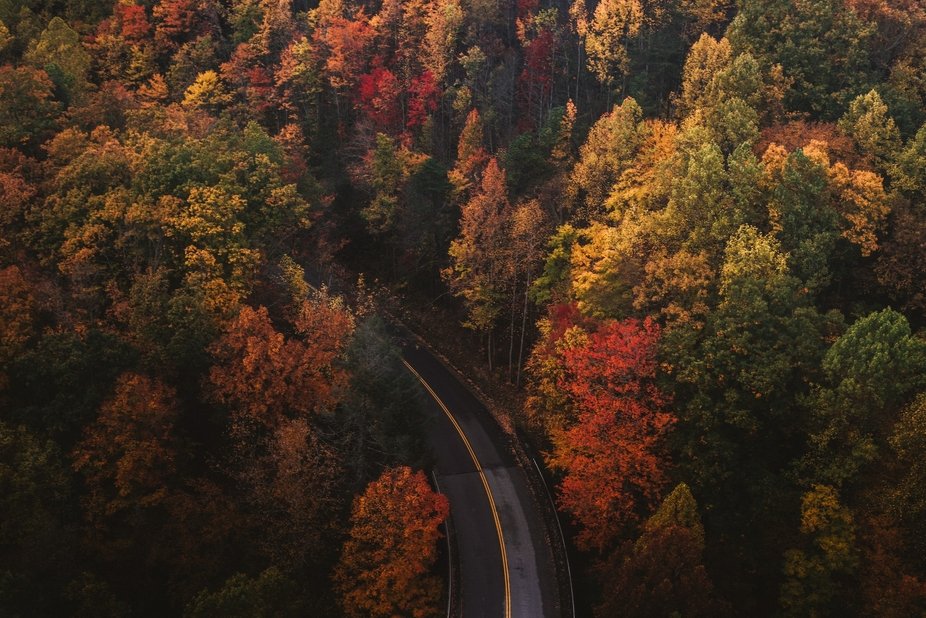Autumn is a canvas of nature, resplendent with rich hues of reds, oranges, and yellows. As the season transforms the landscape into an artist's masterpiece, photographers find themselves chasing this ephemeral beauty. Here’s a comprehensive guide to making the most of this captivating season.
"Through the lens, autumn reveals its secrets: each leaf a canvas, every moment a masterpiece waiting to be captured."

Ideas of Places to Shoot
Forests & Woodlands: Nothing epitomizes fall more than a dense forest teeming with a plethora of colors. When you wander into woodlands, the sheer diversity of tree species can be a visual treat, each contributing a unique shade to the autumnal palette. Position yourself where the sunlight filters through the leaves, casting enchanting shadows and illuminating the forest floor.
Orchards: Beyond the fruit-bearing bounties, orchards provide a rustic charm that's synonymous with the fall. Rows of apple trees or patches of pumpkins against a backdrop of orange and yellow leaves can be idyllic. Plus, the hustle and bustle of harvest add a human touch, infusing life into your shots.
Lakes and Ponds: The serene waters of a lake or pond can become a mirror, reflecting the fiery tones of fall. The juxtaposition of colorful trees with their water reflections creates a symmetrical harmony, turning a simple scene into a mesmerizing landscape.

Mountains & Hills: Climbing to higher altitudes often offers a panoramic view of the valleys and forests bathed in autumnal glory. These elevated vantage points allow for breathtaking landscapes, especially during sunrise or sunset when the sky complements the colors below.
Urban Parks: City dwellers needn’t despair. Urban parks, during the fall, transform into patches of gold and red. The contrast of nature against man-made structures, like benches and lampposts, can lend an interesting perspective. The fallen leaves on pathways, children playing, or couples taking a stroll add a lively dimension.
Country Roads: The allure of a secluded country road, with its twists and turns, is hard to resist. Especially when it’s blanketed in leaves, creating a crunchy carpet. These roads, framed by trees on both sides, can lead the viewer’s eye into the photograph, adding depth and perspective.
The Best Equipment
DSLR or Mirrorless Camera: While the convenience of smartphones is undeniable, a dedicated DSLR or mirrorless camera gives unparalleled control over your shots. Their larger sensors capture more light and detail, especially essential when dealing with the nuanced colors of fall.
Lenses: Your choice of lens can dramatically alter the perspective. A wide-angle lens (e.g., 18-55mm) encompasses vast landscapes, capturing the grandeur of a scene. A telephoto lens (e.g., 70-200mm) lets you zoom into specific details, be it a distant mountain or a bird perched on a tree. A prime lens (e.g., 50mm), with its sharpness and clarity, can make the colors pop, ideal for portraits amidst fall foliage.

Tripod: Handheld shots are versatile, but in dimly lit conditions or for long exposures, a tripod is indispensable. It stabilizes the camera, eliminating blurs and ensuring crisp shots.
Circular Polarizer: This underrated accessory can be a game-changer. It deepens the blue of the skies, makes the clouds stand out, and can reduce reflections from wet leaves or water, making colors appear more saturated.
Camera Bag with Rain Cover: Fall weather can be unpredictable. A sudden drizzle or an unexpected downpour shouldn't deter your photography pursuits. A good camera bag with a rain cover ensures your gear remains dry and safe.

Settings for Amazing Shots
ISO: A rule of thumb is to stick to lower ISO values (100-400) during daylight to maintain image clarity and avoid graininess. However, as daylight fades or under cloudy conditions, bumping up the ISO can help you achieve faster shutter speeds without compromising too much on image quality.
Aperture: Your aperture setting can control the depth of field. For expansive landscapes where you want edge-to-edge sharpness, a smaller aperture like f/8 to f/16 is ideal. Conversely, for portraits or when the aim is to isolate a subject from its background, a larger aperture such as f/1.4 to f/5.6 creates a creamy, out-of-focus background.
Shutter Speed: This setting depends largely on your subject. If it's a breezy day and you’re capturing rustling leaves or birds in flight, a faster shutter speed (e.g., 1/500s) freezes the action. For static scenes or where you want to capture the motion, like a waterfall amidst autumn trees, a slower shutter speed (1/60s or slower) is required.

Fall photography is more than just capturing colors; it's about encapsulating the essence of change, the poetry of transition. As the leaves turn and nature prepares for a winter slumber, there's a silent story unfolding in every corner. Whether you're a seasoned photographer or someone beginning your journey, let the hues of autumn inspire you. With the right tools, settings, and a passionate eye, you can freeze these fleeting moments, creating memories that last beyond the season. Embrace the magic of fall, and let your photographs be a testament to nature's grandeur.

